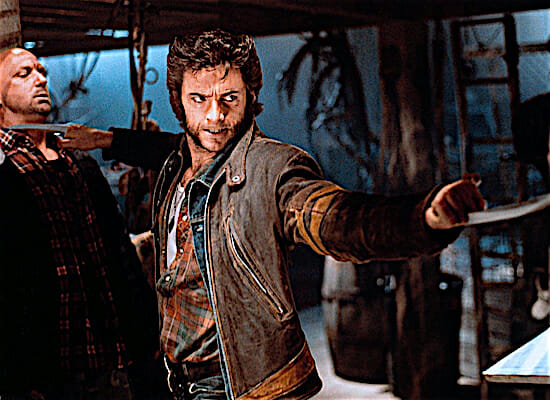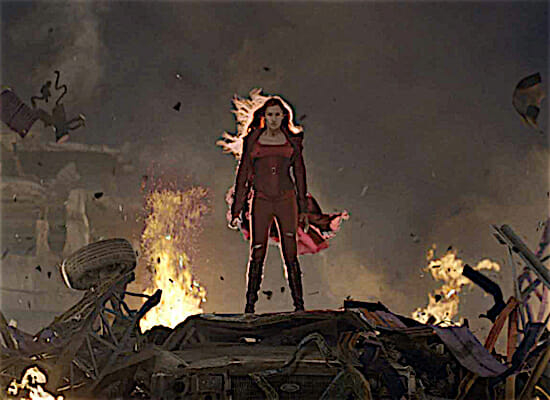How to Watch the X-Men Movies in Order

The X-Men cinematic universe, up until the acquisition of Fox by Disney (which allowed for all the Multiverse madness in the second Doctor Strange film), has been a mixed bag—in terms of quality, temporality and quantity of its heroes. Watching the X-Men movies in order has gotten…complicated. The mutants are linked together by some of the most recognizable comic characters of all time, embodied by performances like Hugh Jackman’s star-making turn as Wolverine, Patrick Stewart’s definitive Professor X, and Ian McKellen’s engrossing Magneto. But figuring out which X-Men movie to watch is almost as difficult as figuring out when the one you picked to watch actually occurs, either in the real life franchise timeline or in the context of the film universe.
Here’s how to watch the X-Men movies in order, from X-Men: First Class to Old Man Logan:
1. X-Men: First Class (2011)
Set in: 1962

Though all continuity’s out with the baby and bathwater by this time, when Matthew Vaughn, Bryan Singer and company decided to go back in time to show the founding of the X-Men, something equally indulgent happened. Placing the mutants in the era from which they originated, Vaughn got to play with the popular cinema touchstones of the time: First Class incorporates a distinctly 007 vibe. Apart from a horribly miscast January Jones as Emma Frost, and the handful of Marvel characters nobody but the diehardiest of Marvel diehards could possibly could give a crap about, it’s an excellent jumping off point for extending a franchise. —Scott Wold
Note: Much of X-Men: Days of Future Past takes place in 1973, but we’ve slotted it in 2023 so as not to spoil anything for you.
2. X-Men Origins: Wolverine (2009)
Set in: 1979

The initial prequel/spin-off from the lucrative X-Men franchise is memorable for all the wrong reasons. It has plenty going for it—the most popular character from both movie and comics, played by Hugh Jackman in what was already considered a definitive portrayal, and the introduction of Wade Wilson—Deadpool!—played by Ryan Reynolds. What did it do with this potential? Ah, squandered like only Hollywood can squander. Jackman still delivers a solid performance, but in what has become a classic superhero film blunder, Reynolds’ proto-Deadpool has his power set completely, unnecessarily changed and, worst of all, his mouth sewn shut. The Wolverine and Logan made it official—X-Men Origins: Wolverine represents the nadir of the Wolverine solo films and the Jackman era as a whole. Now, bonus—it’s also clearly the worst of the Fox era X-Man films. —M.B.
3. X-Men: Apocalypse (2016)
Set in: 1983

The character of Apocalypse is no easy task to work into a film adaptation, and considering that X-Men: Apocalypse is really all about the villain, it stacked the deck against the feasibility of a truly great film from the start. He suffers from the issues of many ultra-powerful, omnipotent superhero film villains: He’s capable of seemingly anything, at any given moment, which robs him on some level of personality. Even the talents of Oscar Isaac struggled to fully flesh out the character in a way that could compare to say, Magneto (Michael Fassbender), whose lifetime of suffering is so much more relatable. Still, Apocalypse the film manages a more than ample entertainment factor, leaning on its now burly ensemble cast to carry each scene, even if the result feels somewhat inconsequential. There was all-too-much internet furor leading up to its release that the film would be “all about Mystique/Raven,” and that Jennifer Lawrence’s star had eclipsed the series, but any objective viewer would call those assertions unfounded. In reality, Mystique’s story is perhaps only the third or fourth most prominent, following those of Professor X (James McAvoy), Magneto and even the young versions of Jean Grey (Sophie Turner) and Cyclops (Tye Sheridan). It’s a fair question to ask how much more potential lies in the X-Men universe at this point before a studio burns the whole thing down and starts fresh, but Apocalypse at least provided an action-packed bridge between the era that began with First Class and eventually ends up at the first Bryan Singer films. —J.V.
4. X-Men: Dark Phoenix (2019)
Set in: 1992

In Dark Phoenix, Simon Kinberg again attempts—having co-penned Ratner’s 2006 garbage fire with Zac Penn, which first cast Famke Janssen as the hero in crisis—to adapt the 1980 comic book saga by Chris Claremont and John Byrne into a single film with little to no emotional scaffolding assembled by previous entries. Though ultra-uncanny teen telepath Jean Gray (Sophie Turner, fifth-billed as the titular character) disintegrated Apocalypse (Oscar Isaac) back in the ’80s, now in 1992, Jean’s powers are still largely unquantifiable, meaning that over the 10 years between films, Professor Xavier (James McAvoy) hasn’t made significant strides in helping his star pupil get her shit together. Granted, that’s a long process, anyone coming to terms with their metaphorical puberty, but for a franchise concerned with time travel and alternate timelines and merging the initial films with the post-First Classcast in a post-MCUcinematic world, Dark Phoenix fails spectacularly to grasp anything chronological. But then again Dark Phoenix was always destined to fail. Limiting the sprawling story to one main arc severely debilitates the original’s emotional resonance, but avoiding Apocalypse’s swollen plot and stakes-less character narratives means reigning in an essentially big saga and cutting all of its awe down to some rote CGI. To make this work in one movie is to deny the essence of the source text. Kinberg may have a knack, better than Singer’s even, for knowing how to transform an otherwise obligatory action scene into something that seriously connects to whatever scant emotional weight these characters are supposed to be shouldering. (Watching Nightcrawler [Kodi Smit-McPhee], especially, is a spectacle the film nails.) Michael Fassbender may be acting his beautiful face off. But there was no way Dark Phoenix could have been good, and it’s not (though it is better than Apocalypse and Last Stand). It’s X-actly what any of us should have X-pected. —Dom Sinacola
5. X-Men (2000)
Set in: Mid 2000s

2002’s Spider-Man may have been the impetus of the current superhero blockbuster, but it was Bryan Singer’s X-Men that gave birth to the “modern superhero film” in 2000. In that sense, you might call it one of the most influential films on the list—or even the most influential. Keep in mind, this is only three years removed from the likes of Batman & Robin, when it would be safe to say the genre was at an all-time low in terms of mass appeal. X-Men helped bridge that gap, presenting a semi-serious take on the classic Marvel mutant team, anchored of course by the indispensable Patrick Stewart as Professor X, who lends much-needed gravitas. In terms of plot … well, that’s not the strongest facet of X-Men, as we see a fairly generic story about Magneto trying to mutate the entire world. What the film did well was bring together a colorful cast of characters upon which a budding franchise could lean, including Ian McKellen as Magneto, Halle Berry as Storm, Famke Janssen as Jean Grey and of course Hugh Jackman as breakout character Wolverine, whose popularity threatened to overshadow the entire series. Watching it in 2016, the result is rather cheesy (Storm and her “toad struck by lightning” line?), but X-Men is like a cinematic proof of concept: Big-budget, major studio superhero movies could become the new tentpoles. Meanwhile the sequel, X2, would go on to improve upon that foundation in almost every way. —Jim Vorel
-

-

-

-

-

-

-

-

-

-

-

-

-

-

-

-

-

-

-

-

-

-

-

-

-

-

-

-

-

-

-

-

-

-

-

-

-

-

-

-
















































